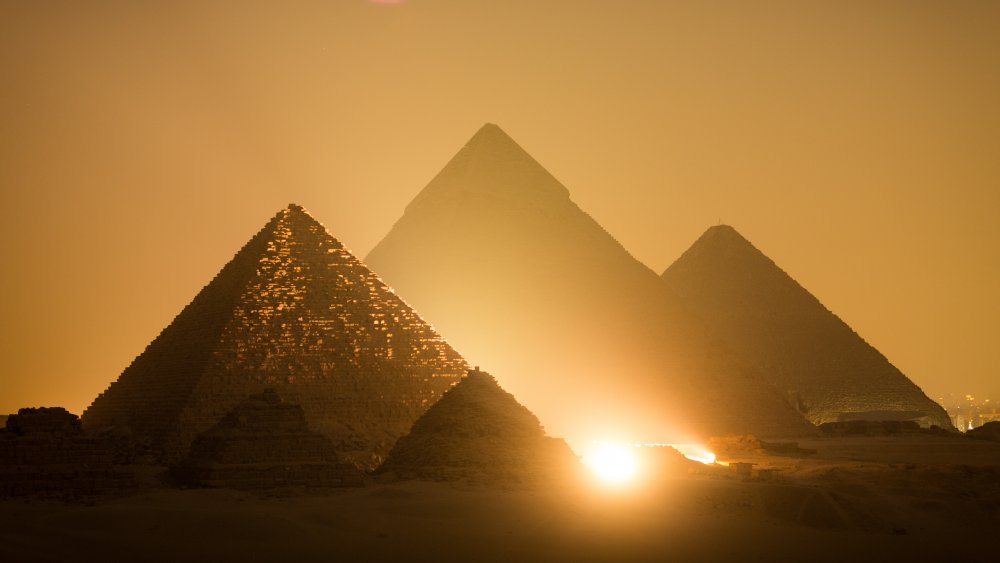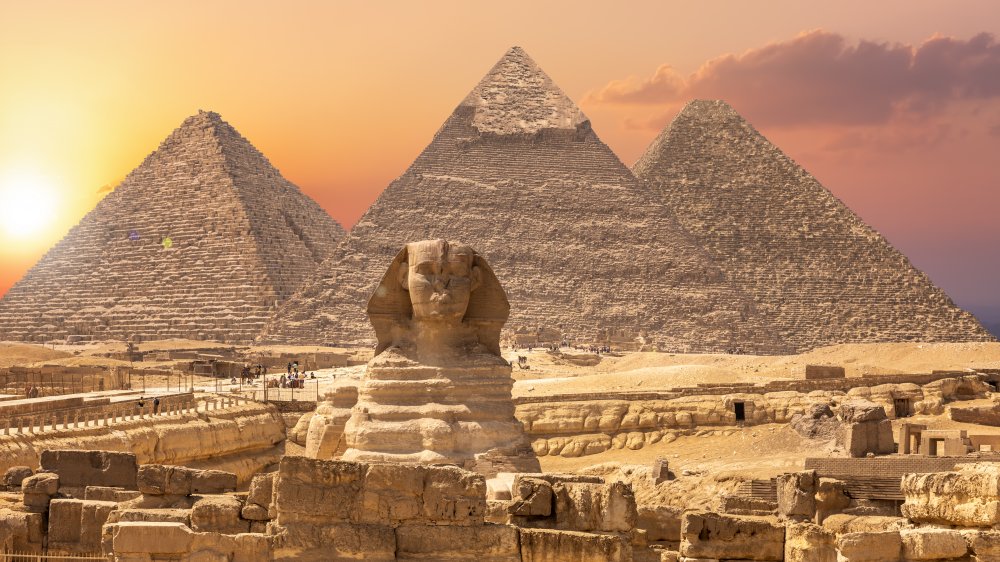The Untold Truth Of The Pyramids Of Giza
The Pyramids of Giza have inspired awe, speculation, and more than their fair share of "alternative history" theories. Some point to the Pyramids of Giza mirroring apparently artificial, pyramidal structures in the Cydonia region of Mars, where the infamous Mars face resides, as reported by Universe Today. Yet other postulations, of the type you might see on late night History Channel programs, include the Pyramids of Giza being built by alien life, being focal points for world energy, or somehow being built by the Illuminati, referencing the Egyptian symbolism seen on the back of the United States dollar.
Of course, it makes sense that ancient, megalithic structures would inspire intense curiosity, and beg to be explained. People will invariably use conjecture to fill gaps in strict explanations, especially when faced with structures that seem so daunting to build, even by modern standards. Admittedly, the interior design of the Great Pyramid, in particular, is notoriously odd and full of curiously placed air shafts, hidden doors, irregularly placed chambers, including the King's Chamber and Queen's Chamber, and a massive, empty room that is set to be explored using tiny robots that can fit through 3.5 cm holes, as described in Live Science.
Reality, though, while often weird, is even more often mundane. In the absence of evidence, Occam's Razor applies: the simplest answer is typically the truest one. Such is the case of the Pyramids of Giza. Even more so, because there's plenty of evidence to be had.
The brilliance of the ancients
Carbon dating places the construction of the Pyramids of Giza at about 2600 BCE, as reported by the BBC. Specifics of their construction have eluded researchers for years, but recent evidence, as stated by Discovery, shows that the stones came from a quarry to the south, and the sand along the way was wet, making them easier to transport. As for a system of ramps to elevate the stones, a nearby rock quarry at Hatnub in southeast Egypt was discovered, flanked by holes that mark the positions of wooden posts used in a complex pulley system, not seen for another 2,000 years in Ancient Greece. Wood, of course, rots, which adds to the confusion about how megalithic structures were built.
The Pyramids of Giza were built to honor three Egyptian pharaohs: Khufu, Khafre, and Menkaure, each with their own dedicated pyramid. The largest, known as the Great Pyramid, is Khufu's, and measures a staggering 481.4 feet tall. They used to be coated in limestone, as well, before it was stripped for nearby mosques and fortresses, which, according to Smithsonian Magazine, meant they glowed a spectacular white in the day, or under moonlight. Numerous other temples and burial grounds were built through the Nile floodplain for other royalty.
Anything less than a full acknowledgement of the intelligence and ingenuity of people in the past is doing a disservice to the truth behind such grand accomplishments. In this case, even mundane explanations can produce spectacular sights.

